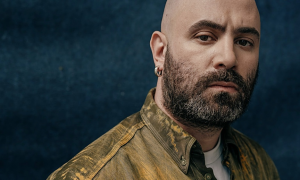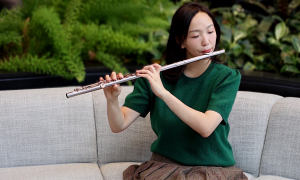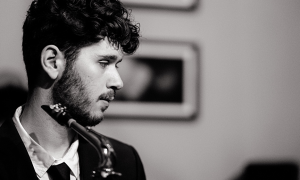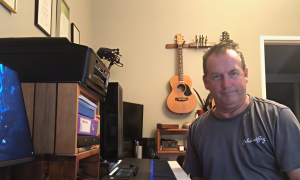Home » Jazz Articles » Take Five With... » Take Five with Sara Gazarek
Take Five with Sara Gazarek
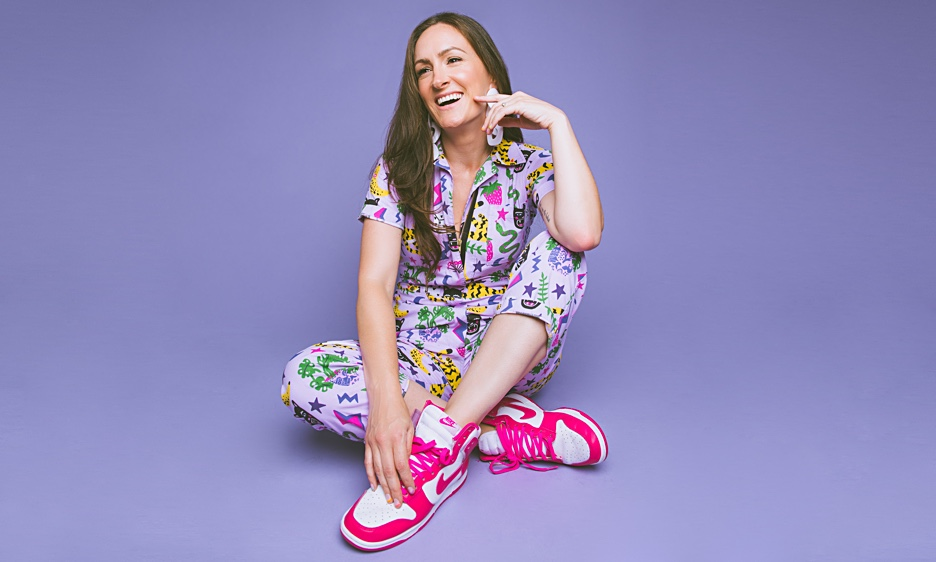
Courtesy L. Desberg
Meet Sara Gazarek
Born and raised in Seattle, WA, 3x GRAMMY nominated jazz vocalist Sara Gazarek reigns as one of the most creative voices of her generation, and one "who may well turn out to be the next important jazz singer" (Los Angeles Times). Collaborating with jazz legends Fred Hersch, Billy Childs, Kurt Elling, and more, and with 6 critically-acclaimed albums under her belt at the age of 40, Gazarek often tours internationally as a soloist/band leader, and as a co-founder of the vocal collective, säje, whose debut single earned a 2021 GRAMMY nomination. Sara is a 2023 Chamber Music of America New Jazz Works grant recipient, serves on the LA Chapter Board of Governors for the Recording Academy, and works as an Associate Professor of Jazz Voice at the Eastman School of Music (University of Rochester) where she currently working to build their brand new jazz voice degree, set to launch in Fall of 2024.Instrument:
Voice.Teachers and/or influences?
I've been fortunate to have had a handful of incredibly supportive mentors over the years—John Clayton is like a musical father to me, Kurt Elling, Carmen Bradford, Al Schmitt, the list goes on. But my list of influences will probably never stop growing. Early influences were Ella and Sarah, Carmen and Nancy Wilson. Later I turned to Irene Kral, Julie London, Betty Carter, Al Jarreau. These days Kristin Berardi, Kate McGarry, Cecile McLorin Salvant and so many others keep me moving. Yayoi Kusama, Kara Walker, Yrsa Daley-Ward.Your sound and approach to music.
It's constantly changing. I think early on, I was so focused on doing it "right" and learning the rules. These days I think I'm more curious about the cracks, the space between. Beauty can only go so far—I think I'm more curious about authenticity and the entire spectrum of the human experience.Your teaching approach
As a teacher, it's very important to me that my students see themselves reflected in this process, in this music, as soon as possible. While it might prove a bit more challenging or time consuming, I really hope I'm able to avoid the cookie cutter approach in my teaching style, where upon graduation, I've created another Sara Gazarek: a young artist who is regurgitating my strengths or artistic preferences. Or, even worse, a product of the generic path of music academia, potentially developing tools removed from context, culture, and art. I personally feel that it's our duty to help music students explore their artistry early on, to help uncover their specific path, and to guide them on the road to becoming who the world needs them to be, whether or not it resonates with me or my own artistic goals.Your favorite recording in your discography and why?
I have a special place in my heart for the albums that feel like a true snapshot of who I was at the time. So, for that reason, whatever I've most recently released will always resonate as most authentic (and by that token a "favorite") to me. My newest project (the four song EP Vanity) feels like the most I've stretched and shared as a person and an artist. It's a true thrill to be that exposed, and to hope that someone might see themselves reflected in whatever it is that we've created.What do you think is the most important thing you are contributing musically?
It has felt somewhat important to be involved in the vocal group, säje. To exist in this world, as four female creators, writing, arranging, recording, producing, and releasing our own music? That feels important.How would you describe the state of jazz today?
It might feel flippant, but I (personally) think the core and the values of this art form hasn't changed much—it's masterful, authentic, contemporary, demanding, beautiful, heartbreaking, ever changing.What are some of the essential requirements to keep jazz alive and growing?
I think it's imperative that we acknowledge that this isn't just a style or genre of music, but that it's a cultural art form, born from the Black American experience. Without context, it remains void of a value system tied to humanity, and without that, it misses the mark. Some of the most stunning music of today walks the line of a few different influences (rap, hip-hop, soul, singer-songwriter, etc). But I think, if at the core, there's an acknowledgement of the cultural beginnings, and the value placed on authenticity, expression, mastery of instrument, interplay, communication, and social responsibility, the influences feel less binding and more freeing.What is in the near future?
This year, I'm busy with a handful of new projects. My vocal group, säje, will be releasing our debut album in August, and I was recently awarded a Chamber Music of America New Jazz Works grant for the nonet that I formed for my most recent solo project. I can't wait to create new music for that ensemble, and am really honored to have been given the chance to expand upon the seed that was planted with the EP, with one of my favorite composers, orchestrator Alan Ferber. I'm having a blast working with a team of movers and shakers on the Board of Governors of the LA Chaper of the Recording Academy, but most importantly, I'm also thrilled to be joining the Eastman School of Music faculty, as an Associate Professor of Jazz Voice. It's incredibly exciting to have been given permission to examine the ways in which music academia might not currently serve today's collegiate vocal jazz community. By establishing new ways of thinking and teaching that celebrate, uplift and unify the next generation of jazz singers, and creating a musical bridge that jazz musicians—instrumentalists and vocalists alike—can interchangeably cross, Eastman is championing the future of this genre. I am entirely grateful to the school and the members of the Jazz and Contemporary Media (JCM) department for asking the question, 'how can we help?' and then creating the space to listen!By Day:
I have three day jobs: full time musician, full time dog mom, and full time Associate Professor of Jazz Voice at the Eastman School of Music at the University of Rochester. I am the luckiest woman on the planet to get to balance three things I love with my whole body.What excites you most about building the new Jazz Voice degree at Eastman?
Eastman School of Music has long been acknowledged as one of the most competitive and highly revered music programs in the entire world, and the Jazz and Contemporary Media program is no different—a significant number of my favorite musicians graduated from this very program. So it's thrilling to enter into a space where there is this undeniable and iconic legacy woven into the fabric of the academic experience, but where there is this deep investment in building and expanding upon that history, and integrating something brand new. We are creating a track for jazz singers that challenges the divide between jazz vocalists and instrumentalists often found in jazz academia. By creating a degree with the singer's experience in mind, Eastman is embracing new directions in the ever-changing landscape of the jazz community, and the jazz voice genre. Students should expect a curriculum full of extraordinary performance opportunities with both large and small jazz ensembles, one on one work with guest artists, and academic coursework in jazz and other genres that will broaden and enrich their understanding of this cultural art form in a way that sets Eastman on the map as the place to be for jazz vocal artists and educators.Tags
Take Five With...
Sara Gazarek
AAJ Staff
Fred Hersch
Billy Childs
Kurt Elling
John Clayton
CARMEN BRADFORD
Al Schmitt
Nancy Wilson
Irene Kral
Julie London
Betty Carter
Al Jarreau
Kristin Berardi
Kate McGarry, {{Cecile McLorin
Alan Ferber
PREVIOUS / NEXT
Support All About Jazz
 All About Jazz has been a pillar of jazz since 1995, championing it as an art form and, more importantly, supporting the musicians who make it. Our enduring commitment has made "AAJ" one of the most culturally important websites of its kind, read by hundreds of thousands of fans, musicians and industry figures every month.
All About Jazz has been a pillar of jazz since 1995, championing it as an art form and, more importantly, supporting the musicians who make it. Our enduring commitment has made "AAJ" one of the most culturally important websites of its kind, read by hundreds of thousands of fans, musicians and industry figures every month.








